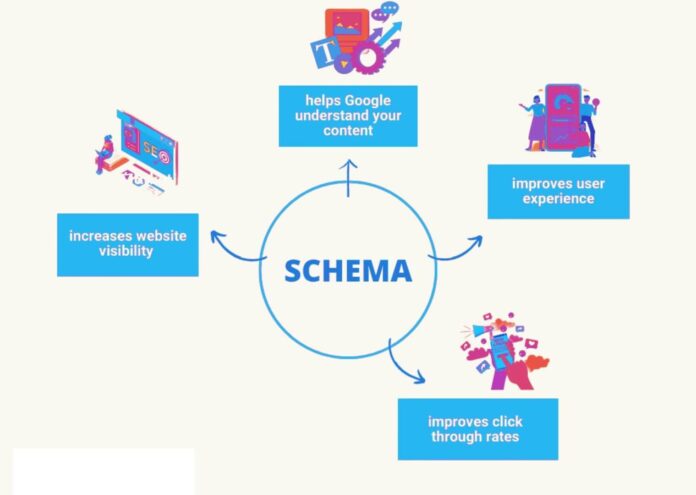Schema markup is a great way to increase your website visibility on Google. Adding this code helps Google better understand what your pages are about, thus improving rankings. I’ve added an example in this article to see how powerful schemas are.
The good news is that adding schema is super simple. It will take you only a few minutes, even if you don’t have any knowledge about them.
So keep reading; I’ll show you everything you need to know about using a schema code, from selection to how you add it to your website.
What is Schema
Schema code, or schema markup or structured data, is a type of code that you add to your website’s HTML to help search engines better understand the meaning and context of your content. It uses a standardized vocabulary (primarily from Schema.org) to label different elements on your page. Schema markup was developed in 2011 by the 3 major search engines of that time, Google, Bing, and Yahoo.
There are currently around 800 schema types, but don’t worry — you only need to use a few of them.
Why is Schema Important
In short, using schema is important because it explains your content better to a search engine. In turn, it will help your content rank better. Not only that, but it will help Google display the so-called rich results. These are visually enhanced search results that go beyond the traditional text. Rich results can be images, carousels, ratings, and other interactive features to provide more information and make search results more engaging.
Let’s look at the image below. As you can see, besides the text, this SERP also displays an image and a rating for the recipe along with the number of votes and the time it takes you to make some delicious chocolate chip cookies.
Another big advantage that schema gives you is with EEAT (Experience, Expertise, Authoritativeness, and Trustworthiness). This is a core concept that Google uses to assess the quality of search results. You can read more about it here. In…
Schema markup is a powerful tool for improving website SEO by providing search engines with additional context about your content. Here’s how you can effectively use schema markup to enhance your website’s SEO:
- Understand Schema Markup:
- Schema markup is a structured data vocabulary that helps search engines understand the content on your website more effectively.
- It uses a standardized format to provide information about entities, such as people, places, events, products, and more.
- Identify Relevant Schema Types:
- Determine which schema types are most relevant to your website’s content. Common schema types include:
- Article
- Product
- Organization
- LocalBusiness
- Review
- FAQ
- Event
- Recipe
- Choose schema types that align with the content you offer on your website.
- Determine which schema types are most relevant to your website’s content. Common schema types include:
- Implement Schema Markup:
- Add schema markup to your website’s HTML code using JSON-LD (recommended), Microdata, or RDFa formats.
- Place the schema markup directly within the HTML code of the relevant page, typically in the <script> tags within the <head> section.
- Ensure that the schema markup accurately represents the content on the page and provides valuable information to search engines.
- Use Structured Data Testing Tools:
- Validate your schema markup using Google’s Structured Data Testing Tool or the Rich Results Test.
- These tools allow you to check for errors and ensure that your schema markup is implemented correctly.
- Optimize for Rich Snippets:
- Schema markup can help your website qualify for rich snippets, which are enhanced search results that include additional information, such as star ratings, images, and other details.
- Use schema markup to provide relevant information that may be displayed as rich snippets in search engine results.
- Include Local Business Information:
- If your website represents a local business, use LocalBusiness schema markup to provide details such as business name, address, phone number, opening hours, and reviews.
- This helps improve your website’s visibility in local search results and increases the likelihood of appearing in Google’s Local Pack.
- Monitor Performance and Adjust:
- Monitor your website’s performance in search engine results pages (SERPs) using tools like Google Analytics and Search Console.
- Track the impact of schema markup on your website’s visibility, click-through rates, and traffic.
- Make adjustments to your schema markup as needed to optimize performance and improve SEO.
By effectively implementing schema markup on your website, you can provide search engines with valuable context about your content, enhance your visibility in search results, and improve overall SEO performance.





